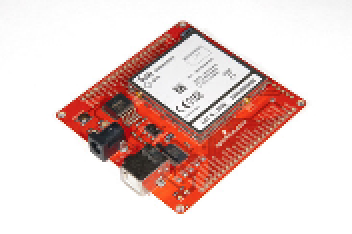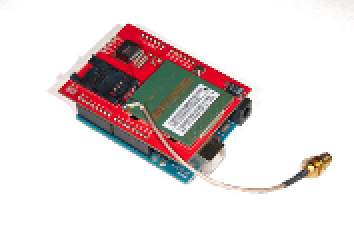Hardware Reference
In-Depth Information
GPRS for Microcontrollers
There are a handful of devices on the market that
allow you to connect a microcontroller to mobile phone
networks directly. Using one of these, your microcon-
troller connects to the Internet the same way that your
mobile phone does. It has a phone number, and it can
send and receive SMS messages, make HTTP calls, and
do anything else you can do on the Internet. The trade-
offs to using them are that they can get expensive—in
terms of both power usage and connectivity costs.
Seeed Studio carries a quad-band GPRS shield as well,
with built-in audio jacks for voice communications in
case you want to build your own phone.
The two challenges to using any of these GPRS shields
are power and price. The SM5100B shield, for example,
can draw up to 2 amps when it's making a call. That's
more than the Arduino's regulator can feed it, so the
shield connects to the board's Vin pin. That means you
need to supply the board with at least 2 amps just for
the GPRS module. The board won't draw all that current
the whole time, but if it can't get it when it needs it, you
won't make the connection.
Telit's modules are the high end of the GPRS module
market, and there are a few evaluation boards and
shields for Arduino based on these. They feature a TTL
serial interface, an AT-style command set (meaning
they operate as a modem, like the Bluetooth Mates, but
with different commands). They have their own TCP/
IP libraries on board, so you can make network connec-
tions, and some models feature GPS as well. One model
even has a Python interpreter so you can run programs
written in the Python programming language on it.
For any of these modules, you'll need a mobile subscrip-
tion and working SIM card from your favorite mobile
carrier. Unless you have a flat-rate data and text plan,
you can spend a lot of money testing and debugging
GPRS projects. A second alternative is a pay-as-you-go
plan for your SIM card. Neither is an ideal choice, unfor-
tunately, so do as much troubleshooting as you can
offline to save money where possible.
Spark Fun sells breakout boards for the Telit GE865
and GM862, as well as one for ADH Tech's ADH8066
module, These breakout boards give you all the pins of
the module on 0.1-inch spacings, and usually a USB-
to-Serial connection. They're not designed to be used
with any particular microcontroller, so you'll have to
start from the command set and the manufacturer's
datasheet if you want to use these.
They also sell a GPRS shield for Arduino based on
Spreadtrum Technologies' SM5100B module. This
module isn't as feature-laden as the Telit modules, but
it has an AT command set, and it can send and receive
SMS messages and make network connections. John
Boxall has a nice set of tutorials for using this shield
Libelium (
www.libelium.com
) sells a number of different
GPRS shields for Arduino through their Cooking Hacks
site (
www.cooking-hacks.com
). They have dual-band
and quad-band modules, meaning that some of their
modules can operate in the U.S., Europe, Africa, and
much of Asia, depending on the country and carrier.
Two ways to get GPRS to a microcontroller: the Telit
GM862 evaluation board breaks out all the pins of the
module to 0.1” spacing; the SM5100B shield breaks out the
serial pins of its module to the Arduino's serial pins.














